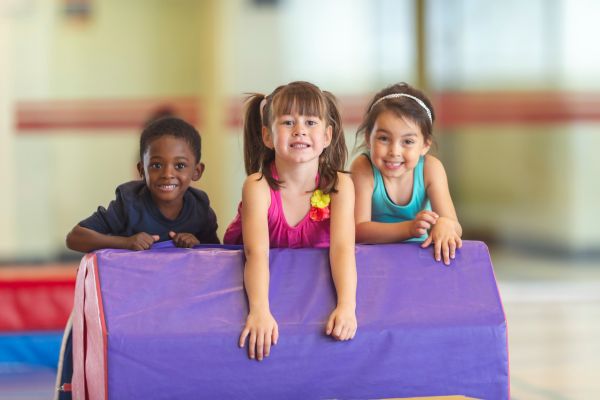Embarking on a new fitness journey can be both exciting and intimidating, especially when it comes to something as dynamic and physically demanding as gymnastics. However, beginner gymnastics exercises are not just for aspiring Olympians or seasoned athletes—they are a fantastic entry point for anyone looking to build strength, flexibility, and body awareness. Whether you’re a parent exploring gymnastics for your child or an adult curious about improving your agility, this guide will help you take that first leap with confidence.
Understanding the Basics of Beginner Gymnastics Exercises
Before diving into the physical movements, it’s crucial to grasp what beginner gymnastics exercises actually entail. At the core, these exercises are designed to lay a foundation for more advanced techniques. They emphasize control, form, and progressive skill development. The beauty of gymnastics lies in its holistic approach to fitness—it enhances balance, coordination, strength, and endurance simultaneously.
Unlike many sports that focus primarily on one aspect of physical development, gymnastics challenges the entire body. For beginners, the emphasis is not on performing complex stunts but on mastering the basics with precision and consistency. This approach ensures long-term progress and minimizes the risk of injury.
Preparing Your Body and Mind for Gymnastics
Starting gymnastics requires more than just physical readiness; mental preparation is equally vital. Confidence, patience, and resilience are key traits that will support your progression. Gymnastics demands discipline, but it also rewards you with a sense of achievement as you conquer each movement.
Warming up is essential before engaging in any gymnastics activity. A proper warm-up prepares the muscles and joints for movement, increasing circulation and reducing the chance of injury. Light cardio, dynamic stretches, and mobility drills are excellent ways to get started. Once the body is sufficiently warmed up, you can begin focusing on specific beginner gymnastics exercises.
The Role of Equipment and Attire in Gymnastics
Wearing the right attire can significantly enhance your performance and comfort during beginner gymnastics exercises. Clothing should be snug yet flexible, allowing unrestricted movement while maintaining safety. For most beginners, a simple leotard or a fitted athletic outfit is ideal.
Gymnastics also involves some basic equipment, depending on the exercises being practiced. A soft mat provides cushioning for landings and helps prevent injuries. For those practicing at home, a clean, flat surface is acceptable, but investing in a basic gymnastics mat is recommended for safety.
Some beginners also benefit from using low balance beams or practice bars, which help simulate gym conditions in a controlled and manageable way. As you progress, these tools become even more valuable for learning technique and building confidence.
Mastering Fundamental Movements and Positions
Beginner gymnastics exercises are centered around mastering fundamental body positions and movements. One of the first positions you’ll encounter is the hollow body hold, which strengthens the core and teaches body control. Another foundational movement is the tuck, which prepares the body for flips and rotations in the future.
The bridge is a classic gymnastics position that enhances shoulder flexibility and back strength. When performed correctly, it lays the groundwork for more advanced skills like walkovers and back handsprings. Similarly, the handstand is a staple in gymnastics that teaches balance, upper body strength, and alignment. While a full handstand may take time to perfect, beginner variations against a wall are an excellent place to start.
Additionally, the forward roll is often one of the first dynamic movements introduced. It helps improve spatial awareness and coordination while teaching how to transition smoothly between positions. Practicing these foundational exercises consistently builds the skills necessary for more advanced gymnastics techniques down the road.
Safety Considerations and Progression in Training
Safety should always be a top priority when practicing beginner gymnastics exercises. This means progressing at a comfortable pace, listening to your body, and avoiding any movement that causes pain or discomfort. Supervision from a qualified coach or trainer is highly recommended, especially in the early stages.
Proper technique is far more important than speed or repetition. Rushing through movements without proper form can lead to bad habits and increase the risk of injury. Take the time to understand each exercise and focus on control and alignment rather than just completing the motion.
As your strength and coordination improve, you’ll be able to explore more challenging movements. The key is consistency and patience. Gymnastics is a skill-based discipline, and even the most advanced athletes return to the basics regularly to refine their technique.
Mental Benefits of Practicing Gymnastics
While the physical benefits of beginner gymnastics exercises are widely recognized, the mental advantages are equally significant. Gymnastics cultivates discipline, focus, and determination. Each new skill presents a challenge that requires problem-solving, perseverance, and confidence to overcome.
Many beginners find that as they improve physically, their self-esteem grows as well. The sense of achievement that comes with mastering even a simple movement can be incredibly empowering. This boost in confidence often carries over into other areas of life, from academics to career pursuits.
Moreover, gymnastics fosters a growth mindset. Mistakes are inevitable, but they are seen as opportunities for learning rather than failures. This resilience is one of the most valuable lessons gymnastics offers, especially for children and young adults developing life skills.
Transitioning from Beginner to Intermediate Level
Once the foundational skills are firmly in place, many individuals find themselves eager to explore the next level of gymnastics. This transition should be approached with care and guidance. Intermediate exercises often include more dynamic movements such as cartwheels, backbends, and handsprings.
However, the move from beginner to intermediate is not solely defined by the complexity of the skills, but by the consistency and confidence with which the basics are performed. It’s essential to maintain a strong foundation and continue refining beginner exercises, even as you start to integrate new movements into your routine.
Regular evaluations, either through personal milestones or with the help of a coach, can help determine when it’s time to progress. Setting small, achievable goals along the way ensures continued motivation and measurable improvement.
Building a Routine and Staying Motivated
Establishing a consistent practice routine is crucial to making progress in beginner gymnastics. While enthusiasm may fuel your initial interest, it’s the habit of regular practice that leads to long-term results. Whether you’re training in a gym or at home, dedicating time each week to work on your exercises keeps your skills sharp and your body conditioned.
Staying motivated can sometimes be challenging, especially when progress feels slow. Keeping a journal of your achievements, setting new goals, or joining a gymnastics class can provide accountability and encouragement. Surrounding yourself with supportive peers or mentors also enhances your learning experience and keeps you inspired.
Remember that each gymnast’s journey is unique. Comparing yourself to others can diminish your motivation. Instead, focus on your personal growth and celebrate every improvement, no matter how small it may seem.
Conclusion: Your Journey Begins with the Basics
Beginner gymnastics exercises are more than just an introduction to the sport—they are the building blocks of a stronger, more agile, and confident version of yourself. With dedication, patience, and a focus on proper technique, anyone can begin this rewarding journey.
Whether you dream of flipping through the air or simply want to enhance your overall fitness, the path starts with mastering the fundamentals. Each stretch, roll, and hold is a step toward greater control and confidence. Embrace the process, trust in your ability to improve, and enjoy every moment of your gymnastics journey.





